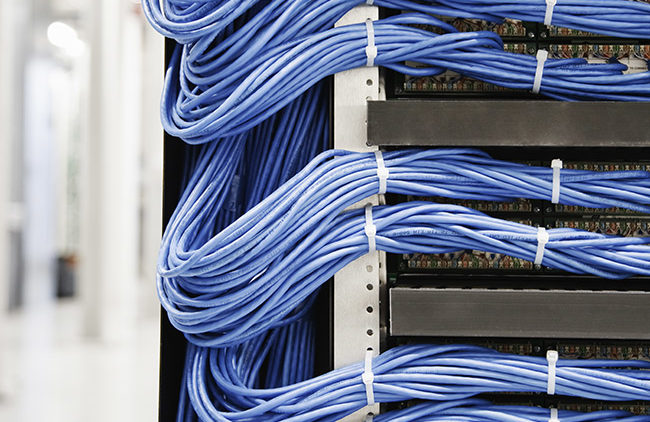Data Center Cabling Best Practices – Part 1
Although it is a crucial task, computer cable management is typically overlooked and neglected. From the cables around your desk to the hundreds of cables in a data center, cabling that is poorly organized can become an unsightly and hazardous mess.
The chief types of network cabling are AC/DC power, copper, fiber optic, and ground. As a whole, data center cabling can be categorized as structured or unstructured. The following will discuss data center cabling best practices.
Structured Cabling
Structured cabling features predefined design standards, utilizing preset connection points and pathways. Its cabling design is based on a system’s bandwidth requirements. After testing is performed to verify good performance, a system’s cables are organized and labeled.
The installation of a structured cabling system is more costly because more time and effort are required. However, the long-term operational costs will be significantly less, and a structured cabling system will have a much longer service life than unstructured cabling.
Unstructured Cabling
In contrast, cabling systems that do not utilize predefined standards, connection points, and pathways are described as unstructured cabling or point-to-point cabling systems.
Typically disorganized, unstructured cabling often restricts airflow and leads to cooling problems and higher utility bills. In addition, the lack of proper planning and design will make MACs (moves, additions, and changes) much more difficult. Even though the installation of unstructured systems is faster and less costly, operational costs will be significantly higher than structured cabling.
Importance of Structured Cabling
The stability of its network and level of connectivity is a data center’s core aspects because businesses need to communicate and carry out transactions swiftly and without interruption.
Every data center will have a variety of cables, ranging from copper to fiber. Each cable can be used for data or power, and improper management can lead to greater operating costs and extended downtimes, which can be expensive.
Thus, cable management must be forward-looking to ensure cables are well organized and easy to maintain. From the beginning, cabling infrastructure needs to be future-proofed to accommodate the growth of the organization.
Part 2 will cover the best practices of data center cabling management.
Progressive Office Cabling
Founded in 1986, Progressive Office’s success has been a direct result of years of commitment to seeking cost-effective solutions. Working together, Progressive teams are committed to getting your data cabling, access control, and telecom systems installed and operating while minimizing disruption and downtime. Call our toll-free number (800) 614-4560 today.

